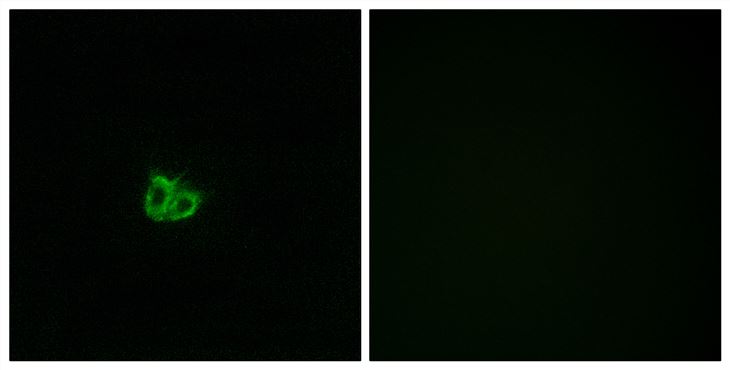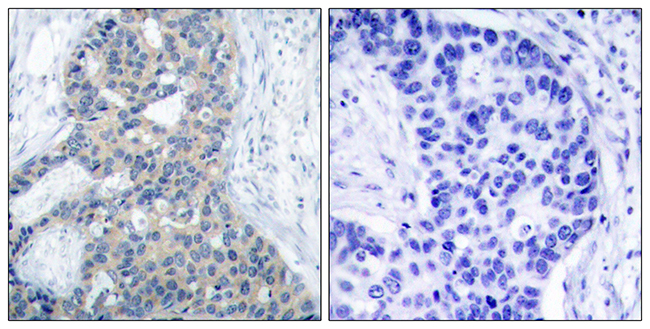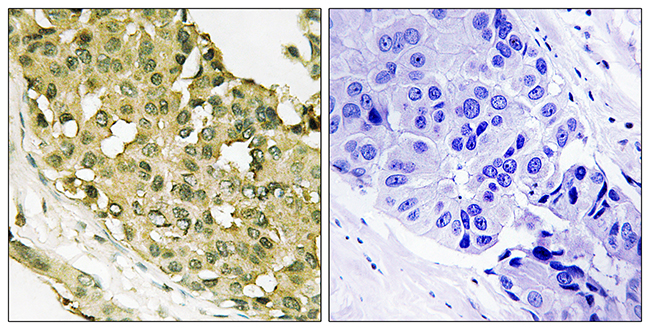Anti-STMN1 polyclonal antibody
Goat anti-Human STMN1 (aa 135-149) polyclonal antibody for WB, IHC-P
| Product Name | Cat. No. | Applications | Host Species | Datasheet | Price | Add to Basket |
|---|---|---|---|---|---|---|
| Anti-Goat IgG Fc polyclonal antibody [HRP] | DPBT-67068RG | IHC ELISA FC IP WB | Rabbit |
|
Inquiry | |
| Anti-Goat IgG Fc polyclonal antibody [FITC] | DPBT-67067RG | IHC ELISA FC IP WB | Rabbit |
|
Inquiry | |
| Anti-Goat IgG Fc polyclonal antibody [FITC] | DPAB22048 | IF | Rabbit |
|
Inquiry | |
| Anti-Goat IgG Fc polyclonal antibody [Texas Red®] | DPAB22055 | IF | Rabbit |
|
Inquiry | |
| Anti-Goat IgG polyclonal antibody [HRP] | DPBT-67070RG | IHC ELISA WB | Rabbit |
|
Inquiry | |
| Anti-Goat IgG polyclonal antibody [AP] | DPBT-67072RA | IHC ELISA WB | Rabbit |
|
Inquiry | |
| Anti-Goat IgG polyclonal antibody [Biotin] | DPBT-67075DG | IHC ELISA | Donkey |
|
Inquiry | |
| Anti-Goat IgG polyclonal antibody | DPAB2710 | ELISA WB | Chicken |
|
Inquiry | |
| Anti-Goat IgG F(ab)2 polyclonal antibody [TRITC] | DPAB22035 | IF | Rabbit |
|
Inquiry | |
| Anti-Goat IgG polyclonal antibody [Texas Red®] | DPAB21914 | IF | Donkey |
|
Inquiry |
| Product Name | Cat. No. | Applications | Host Species | Datasheet | Price | Add to Basket |
|---|
MicroRNA-9 inhibits vasculogenic mimicry of glioma cell lines by suppressing Stathmin expression
JOURNAL OF NEURO-ONCOLOGY
Authors: Song, Yuwen; Mu, Luyan; Han, Xuezhe; Li, Qingla; Dong, Baijing; Li, Hulun; Liu, Xiaoqian
c-Myc-Mediated Epigenetic Silencing of MicroRNA-101 Contributes to Dysregulation of Multiple Pathways in Hepatocellular Carcinoma
HEPATOLOGY
Authors: Wang, Lei; Zhang, Xiang; Jia, Lin-Tao; Hu, Si-Jun; Zhao, Jing; Yang, Jian-Dong; Wen, Wei-Hong; Wang, Zhe; Wang, Tao; Zhao, Jun; Wang, Rui-An; Meng, Yan-Ling; Nie, Yong-Zhan; Dou, Ke-Feng; Chen, Si-Yi; Yao, Li-Bo; Fan, Dai-Ming; Zhang, Rui; Yang, An-Gang
Invoice / Purchase Order
Credit card
![]()


